The Heliacal Rise of Sirius, the Five Sacred Epagomenal Days, and the Egyptian New Year
Enter into ceremony and ritual the great gods of Egypt as the wheel of the year turns.
Happy New Year to my fellow practitioners of ancient Egyptian magick.
Though the date varies year over year, mid July generally marks both the Egyptian new year and the preceding Epagomenal Days. To celebrate, I’m offering a very special, limited edition Scarab Anointing Oil — which you can read more about, and purchase if you’d like, here:
The Heliacal Rise of Sirius
The ancient Egyptian New Year, known as Wepet Renpet or "Opening of the Year," was celebrated with the annual flooding of the Nile. The inundation of waters after long, dry seasons brought rebirth and fertility to the land, symbolically and literally. Only when the Nile waters returned, could the agriculture that would assure survival take place.
This time of year also marks the heliacal rising of the star Sirius: The first visible appearance of the star in the eastern horizon just before sunrise coincided with the annual flooding of the Nile.
A Nurturing Note on Cancer Season, the Earth’s Birth Chart, and the Egyptian New Year
During my Hermetic Astrology training, which is rooted in ancient Egyptian astrology, I remember seeing the Earth’s birth chart for the first time. And guess which sign was found in the first house, marking the ascendant of the Earth? Cancer.
How beautiful that the watery sign of Cancer welcomed the flooding of the Nile. And how beautiful that Cancer, known to be the sign of nurturing and caregiving, is the rising sign of our Earth, a rare planet filled with the waters that make life possible.
Sirius held great importance in ancient Egyptian cosmology and was considered one of the most significant celestial bodies that traversed the skies.
This was in part because of the star’s association with the great mother goddess Isis — the stellar goddess Sothis, also known as Sopdet, that personified Sirius was considered a manifestation of Isis (or Auset). The threads of meaning continue to weave a divine tapestry here, as Isis contains the Cancerian and life-giving qualities of motherhood and fertility (in addition to many more aspects, of course).
And it was in part because of the spiritual significance of Sirius for the afterlife — the journey of the deceased through Duat, the realm of the dead, was often depicted as a boat sailing towards Sirius, a destination of spiritual transformation and eternal life.
The Epagomenal Days
The Egyptian epagomenal days, also known as the "Intercalary Days" or Heru-renpet, refer to five days added to the end of the Egyptian solar calendar. The solar calendar consisted of 12 months of 30 days each, resulting in a 360-day year. To align the calendar with the solar year, five extra days were inserted between the end of the old year and beginning of the new.
On each of these days, a great god or goddess was born — product of the union between the sky goddess Nut and earth god Geb (yes, the sky was the cosmic feminine and the earth the fertile masculine in ancient Egypt — a topic for another time!). Celebrations occurred throughout Egypt on every epagomenal day except for the third, which belongs to the unfortunate god Seth. The following is the traditional order:
Day 1: Osiris (also known as Ausar or Wesir)
Day 2: Horus the Elder (also known as Heru-ur)
Day 3: Seth (also known as Set)
Day 4: Isis (also known as Auset)
Day 5: Nephthys (also known as Nebthet)
In Feasts of Light, Normandi Ellis further explores the significance of each day, offering that Osiris’s day was considered a good day to be born, while those born on the day of Horus the Elder would long to return to the skies and their lives on Earth might be short-lived. (While Horus is usually the son of Isis and Osiris, in his ancient form of Horus the Elder, he is son of Nut and Geb.)
The day of Seth was considered to be extremely unlucky — shops were closed and people were warned not to leave their houses. (While I tend take a non-dual approach to deities, Egyptians found the god Seth to be so terrible — i.e., “He Who Makes Terror” — that he is the one primary Egyptian deity I’ve resisted creating a perfume for. What do you think? Would a Seth perfume be healing or harmful? Let me know in the comments, please!)
The birthday of Isis was the most fortunate day of the entire year, a time of beauty, celebration, and the greatest festivities.
The final epagomenal day belongs to the enigmatic goddess Nepthys. Sister to Isis, wife of Seth, Nepthys is associated with mourning and the afterlife, playing a major role in funerary rites. How fitting then, that she marks the final day, the last release of what came before as a year begins anew.

Celebrating the Epagomenal Days with Ritual & Reflection
Here in the West, we celebrate the turning of the year near the winter solstice, welcoming the official start on January 1st. Yet the Egyptian epagomenal days are part of the West’s cultural inheritance, as well, and the gods and goddesses of this pantheon are always available to us.
As we are roughly halfway through our Western year, these five days offer us a beautiful invitation to reflect on our experiences so far as we prepare for what’s to come. The following rituals are designed to help you work with the energy of these sacred days.
*A note on the timing of these days:
Many people like to celebrate the five epagomenal days in July, as that is likely when they took place in ancient Egypt. I like to focus on the days leading up to and around the feast of Mary Magdalene on July 22nd, as she is closely related to Isis and potentially shares a feast day — here, the day of Osiris would fall on July 19th and Nepthys would close the festivities on the 23rd. For those who wish to be more astrologically accurate, the actual Heliacal rising of Sirius will take place between July 24th and September 3rd, depending on your location (source).
Day 1: Osiris
Osiris is a unique god in that he is known for both fertility (his green color associating him with the fertile green earth) and death (he was torn to pieces by his brother Seth). And isn’t death necessary for life, providing compost and nutrients that nourish new forms into being?
Today, meditate on the gifts you’ve received so far this year. Notice what you have needed to let die, and what has been born in its place. Feel the ever-present life force of spirit in and around you — in form, unformed, and changing form all the time.
You may like to ritually release any thoughts, beliefs, projects, patterns, and attachments at this time, so the energy that once kept them alive may become fertile compost for the new delights awaiting you.
Day 2: Horus the Elder
It is said that Horus is twice-born — once of the heavens and once through his mother Isis’s womb. Either way, this falcon god helps us soar to higher perspectives, illuminating divine wisdom through his connection with the sun. Associated with the pharaohs and rulership, Horus invites us to gain new perspectives so we may be better leaders of our own lives.
This day, meditate with the sun. Breathe in sunlight and feel every cell lighting up with solar blessings.
You may like to journal after your meditation, when your mind and heart are clear: What do you most wish to create in the coming part of the year? Where do you need to embody your leadership even more? How can you remind yourself of your divine worthiness to be this leader and receive these blessings?
Day 3: Seth
Seth is the harbinger of death, and while considered an unlucky god, he is given one of the five epagomenal days for a reason — life isn’t all rainbows and unicorns, and the more we accept that there are things in life we don’t like, the more unshakable inner peace we can cultivate.
Nondual meditation is a significant part of my personal spiritual practice. I also practice unity meditations, where I become one with Source and feel the oneness of all existence. These practices are immensely fortifying for my spirit, helping me cultivate embodied resilience, compassion, and presence.
And, as a human, I have preferences. There are some things I like, and some things I don’t like. Can you relate?
Rather than resisting what we don’t like — or trying to push away or transmute our feelings of dislike — we can build psychological health by simply accepting and acknowledging what is.
This is where Seth comes in. We don’t like suffering. We don’t like unfortunate events. Loss, harm, destruction, and cruelty are not things we generally want to experience or witness. Yet when we fully face them, they begin to lose some of their power over us. This is the transformative alchemy of shadow work.
Today, allow yourself to feel all the feelings you’ve pushed away this year. The grief, frustration, shame…Bring the following questions into your meditation: How can you experience these challenging emotions without judging them as bad? What internal shifts do you experience if you allow yourself to dislike these emotions, yet also accept that they’re a normal part of life? See if you can feel a lessening of pressure or tension as you sink deeper into the truth of your experiences.
Any sort of shadow work such as this can be difficult and tender. Fortify yourself with loving kindness before and after this practice. Breathe in the unconditional love of the universe. Remind yourself that your true nature is always whole, loving, and loved.
Day 4: Isis
Isis is a goddess of many dimensions. Fertility and motherhood, magic and wisdom, beauty and shapeshifting, royalty and self worth, earthly and celestial realms… Isis is the goddess of many names.
What names do you bear? Parent. Child. Lover. Teacher. Healer. Creative. Scholar. Warrior. Guide. Advocate. Wisdomkeeper. Human.
You are all of these words and, like Isis, you are more.
Today, take time to celebrate the roles you’ve played or still play in this life. Allow the gifts and blessings, those given and received, to arise within your consciousness.
Then ask yourself, what else? What areas of your being remain untapped? What names have you been afraid to own, and where does that resistance originate?
In today’s meditation, imagine yourself in a giant sphere of energy or light. See all the names you’ve taken on to fill this space. Then expand your sphere even more — notice the new space this creates. What might arise when given room? What new names long to be born through your time, energy, and intention? And what ever-present name lies at the heart of the sphere, representing your most authentic, whole self?
Day 5: Nepthys
Nepthys rules the dreamworld, guiding us into what is unseen, just beyond the veils of perception. As a goddess of sorrow, she has no fear of looking into the dark, for she has already faced the sadness of life and still walks forth with a heart filled with love.
If you’ve tended to your daily meditations and rituals so far, you have acknowledged and released what no longer serves. You have embraced your true self worth. You have faced the dark sides of life and emerged with love. You have expanded your understanding of who you truly are.
Now, the groundwork is in place for you, like Nepthys, to see beyond your past veils of perception.
In today’s meditation, ask what may I now see that has previously been hidden? Depending on your heart’s subtle intentions, this might reveal insights into your purpose, the answers to problems you’ve been struggling with, inspiration for your next move, or even a peek into your future. Trust that whatever arises is perfect for right now.
Want these ceremonies in a beautiful, full-color PDF you can download and keep? Well here you go!
Yes, this will subscribe you to my regular email list — that’s the easiest way to share this — but it’s a great one. And you can update your preferences anytime :)






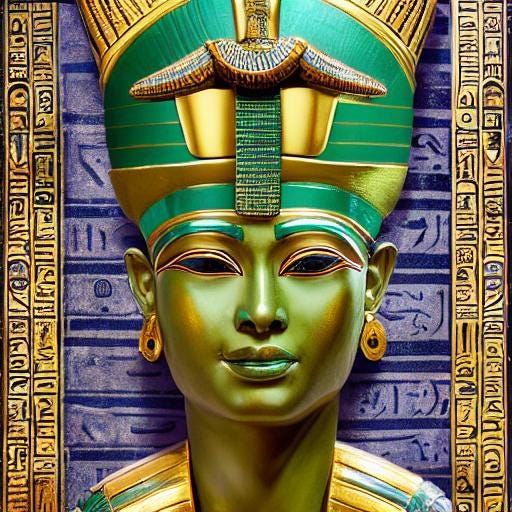
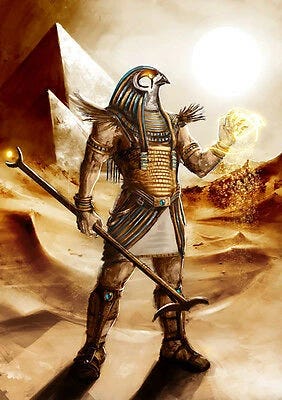
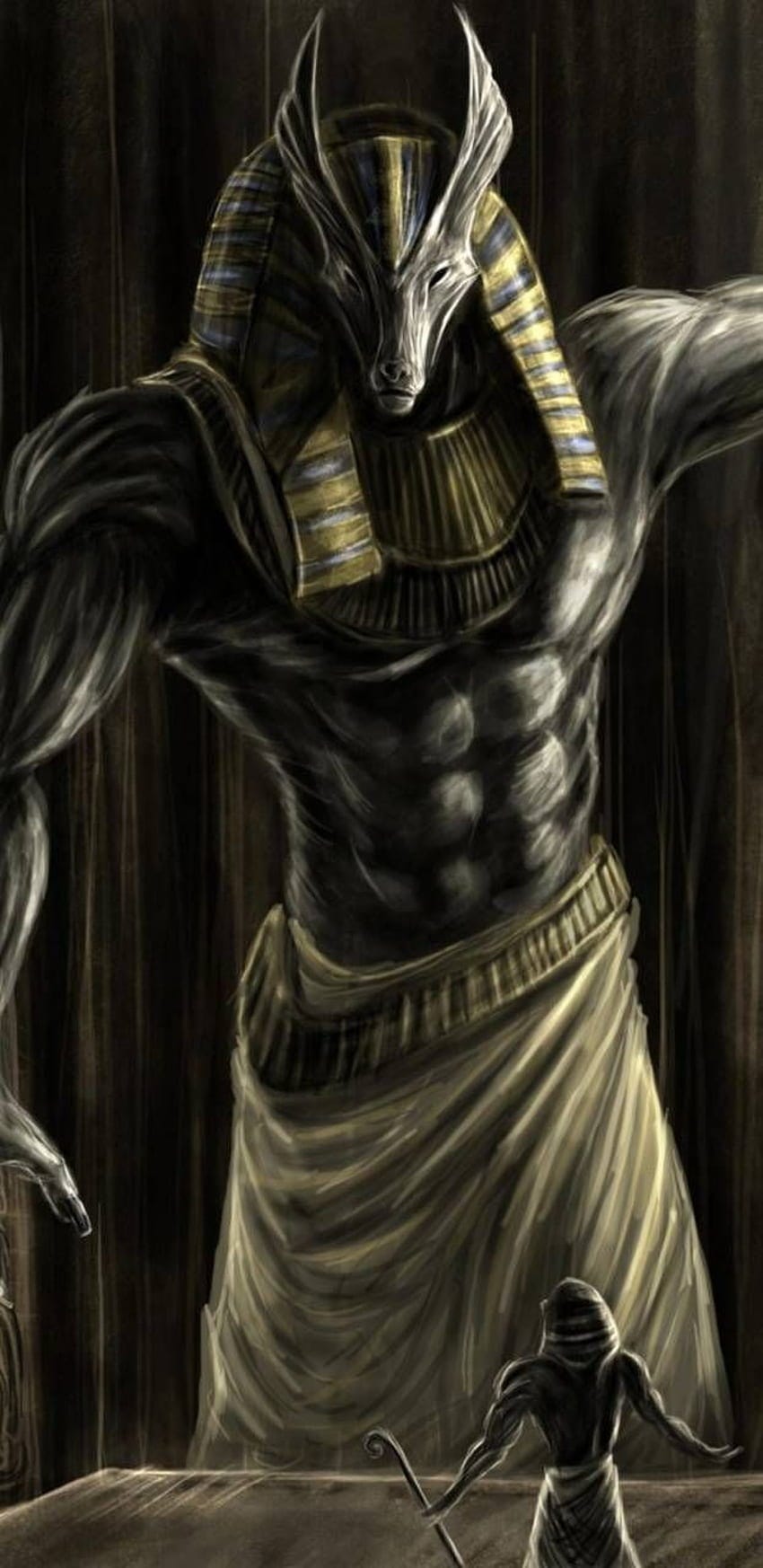
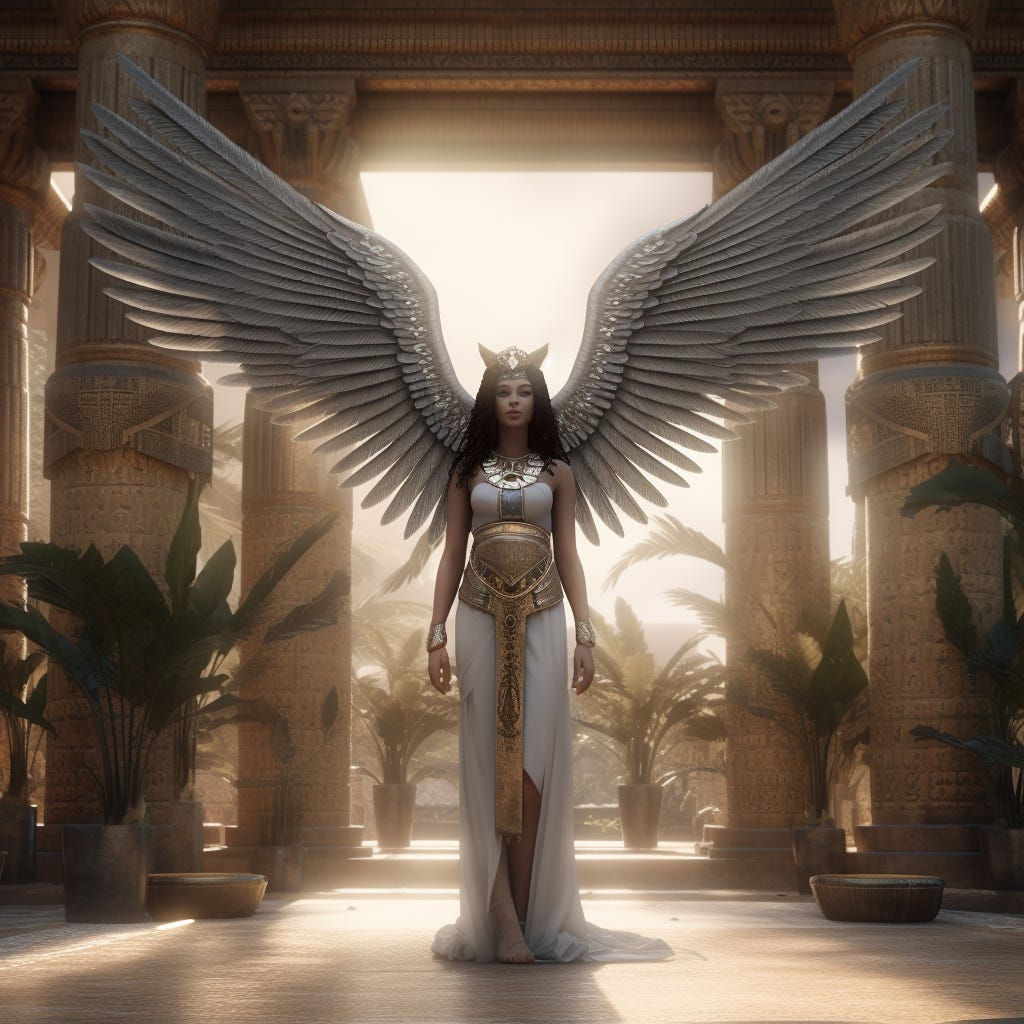
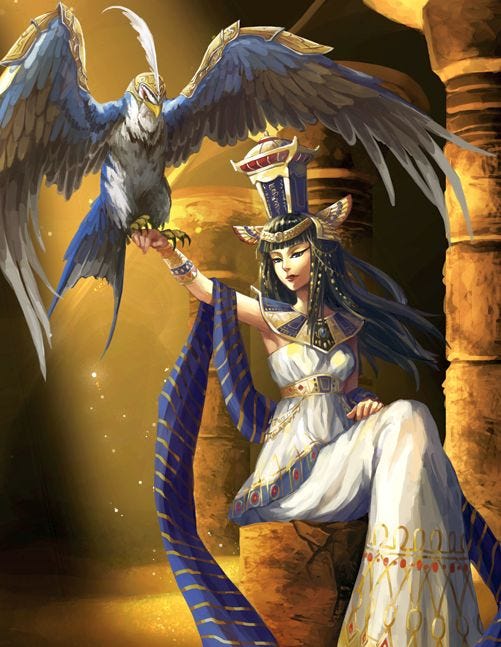
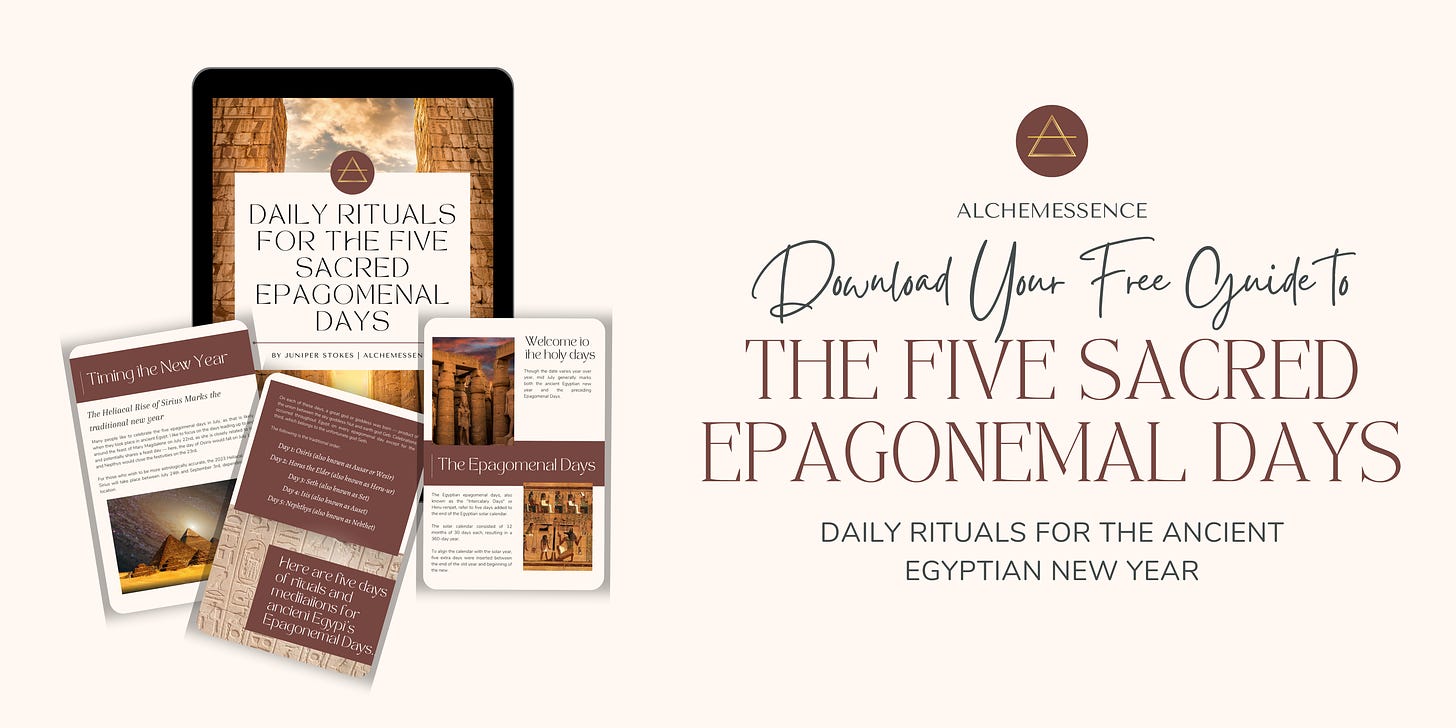
I am loving this Juniper! Like many people who follow a spiritual path I feel a strong connection to Egypt and it’s gods and goddesses. I have been able to call on them for help and access their powerful energy and guidance. I look forward to coming back to this post to learn more. 🙏💫
So many layers of learning here!!